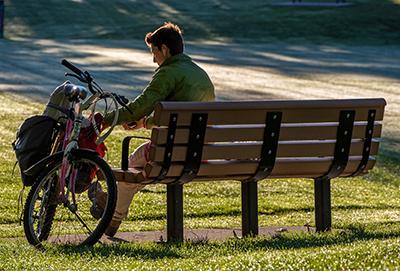Traffic & Transportation
Can I get a speed limit sign on my street?
The Traffic and Transportation Section receives numerous requests each year for the installation of new speed limit signs on city streets. According to the British Columbia Motor Vehicle Act, unless posted otherwise, "a person must not drive or operate a motor vehicle on a highway in a municipality at a greater rate of speed than 50km/h." Our current practice is to install speed limit signs only at locations where speed changes from 50km/h.
How can off-road vehicle access be deterred?
The existing terrain within Kamloops does lend itself to this type of activity and therefore results in a large number of signage requests as well as barricades.
The following guidelines must be considered prior to installation of any signs or barricades:
- Signs will be posted for public lands only and where access points to such lands are limited and can be feasibly controlled by the installation of signs.
- The installation of no post guardrails or gates will only be considered in areas with existing barriers on either side (i.e. fences, hedges, buildings, etc.).
How do I request a crosswalk?
Requests for crosswalks are to be submitted in writing either by hard-copy or by sending an email to the Traffic and Transportation Section. Staff will evaluate the request and conduct the necessary studies to determine if a crosswalk is warranted at the location. If it is determined that the crosswalk is warranted, the location is added to a priority list for future installation.
In general, crosswalks should be viewed as channelization devices rather than safety devices. Marking a crosswalk does not always increase the safety of pedestrians. Research studies show higher accident rates at marked crosswalks than at unmarked crosswalks and suggest that marked crosswalks may give pedestrians a false sense of security. Pedestrians often step off the curb into the crosswalk expecting the approaching drivers to stop.
The crosswalk markings, however, may not always be readily apparent to drivers from a safe stopping distance. As a result, drivers sometimes are unable to or fail to stop, causing an accident. Although drivers must yield the right-of-way to pedestrians at crosswalks, two painted lines do not provide protection against an on-coming vehicle.
How do I request the installation of a traffic signal?
Traffic signals assign the right-of-way to various traffic movements within an intersection. Before installing a traffic signal at an intersection, established minimum warrants must be satisfied. The City of Kamloops Traffic Signal Guidelines require that specific traffic and pedestrian volumes, accident history, and/or unusual conditions must be satisfied or present at the intersection before a traffic signal may be installed. To request a traffic signal at an intersection, please submit the request in writing either by hard-copy or by sending an email to the Traffic and Transportation Section.
What can be done to improve traffic visibility/sightlines?
Motorists frequently express their concerns to the City about difficulty in seeing oncoming traffic while stopped at an intersection. Motorists must come to a complete stop at the painted stop bar or a point closest to the stop sign. They may then proceed forward, if it is safe to do so, to a point where they can gain an acceptable site line to see oncoming traffic.
When vegetation or objects located on private property or the boulevard area are creating a sightline problem, it is the property owner's or adjacent property owner's responsibility to ensure that these objects, trees, bushes or hedges are removed or maintained and properly trimmed back so as to not interfere with any pedestrian movements or traffic visibility.
To request a review of traffic sightlines or visibility, please call the Traffic and Transportation Section at 250-828-3774.
What can we do about speeding vehicles on my street?
Each year the Traffic and Transportation Section receives many complaints of speeding on residential streets. We recommend that the RCMP Traffic Section be notified (250-828-3000) by the public and provide as much information as possible. This should include the location and, if possible, the make, model, color and license plate# of any vehicles perceived to be speeding excessively. Times of day that speeding tends to occur is also helpful.
We also recommend that you request that the RCMP have "Speed Watch" monitor the location. Speed Watch is a volunteer program that uses portable RADAR equipment and an electronic sign to increase public awareness of their speed.
When are left-turn arrows used at a signalized intersection?
Although left-turn arrows benefit turning traffic, they also increase waiting times for other traffic and pedestrians using the intersection. For this reason, certain criteria are used to ensure they are installed at locations where they do not adversely affect other movements.
The criteria used when evaluating the need for a left-turn arrow signal are:
- number of left turn vehicles vs. opposing traffic
- how well the movement is operating without a left-turn signal
- how much the left-turn signal will increase waiting times to other traffic movements at the intersection
- the accident history for the movement
Information needed to investigate a requested timing change includes the intersection location, direction of travel, the weekday and time of travel in which the problem occurs. If you have signal timing requests/concerns, please call at 828-3774.



